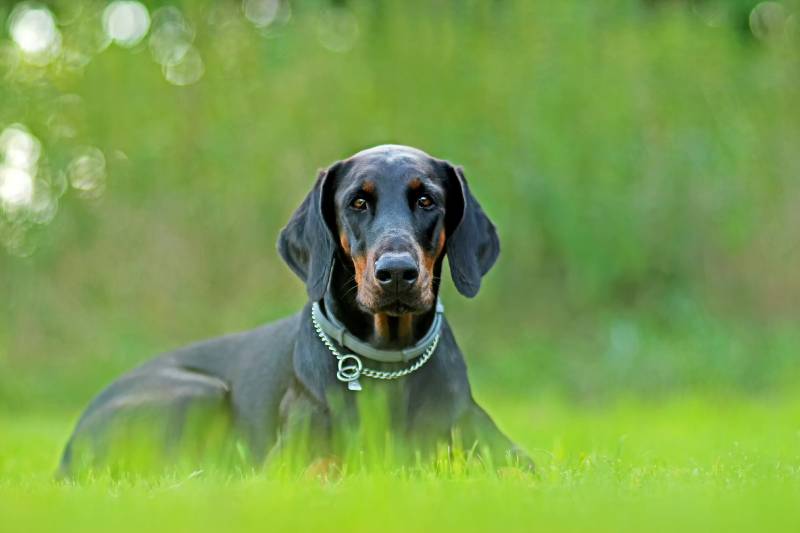What Breed of Dog Can Smell Cancer? What The Science Tells Us

Updated on
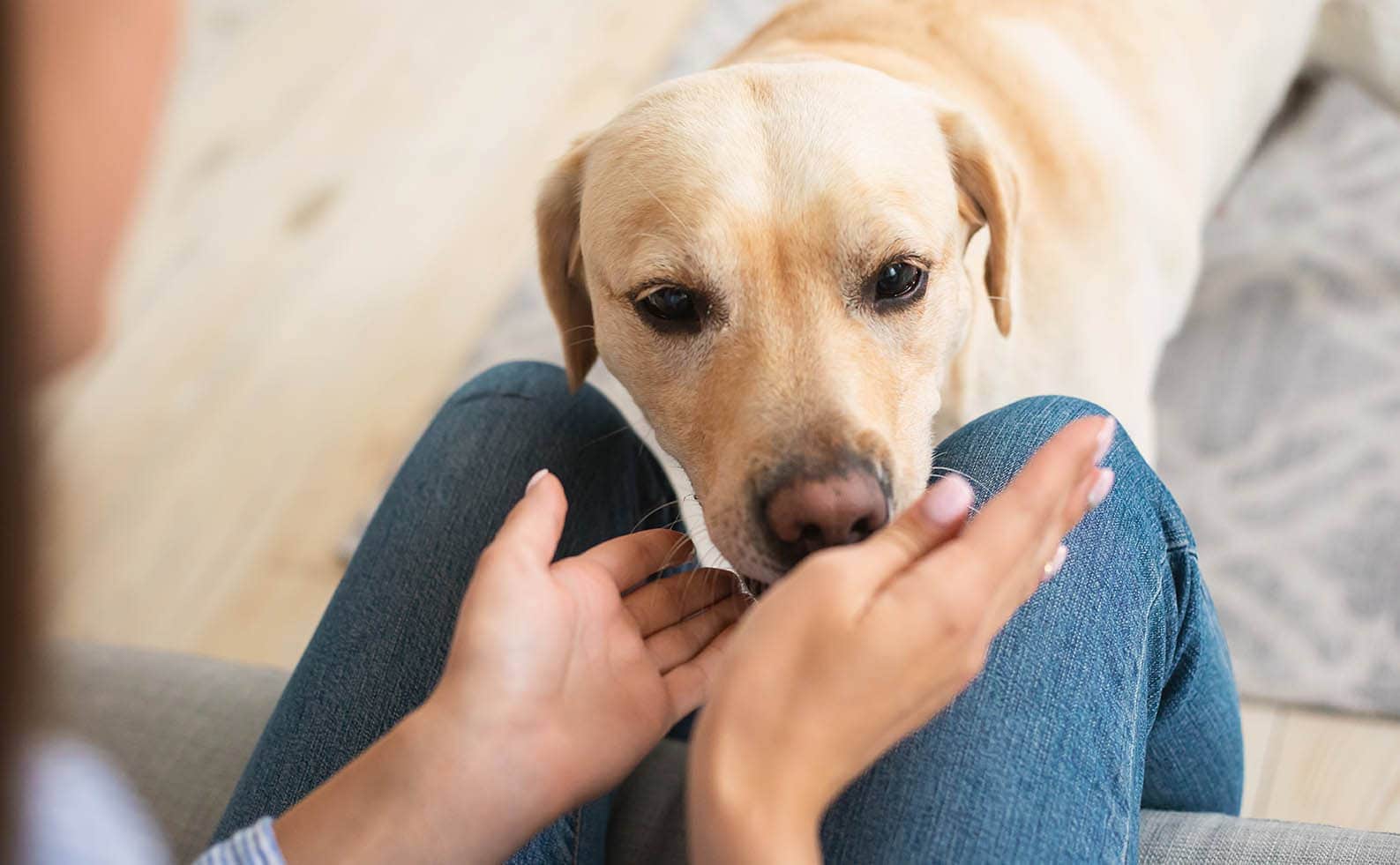
Dogs have long been known to use their noses to benefit humans. They have a place in human medicine, serving the community for decades as service dogs for those with additional needs and as assistance dogs for those with disabilities. Dogs can detect seizures before they happen and smell changes in blood sugar to prevent diabetic crashes. But can they detect cancer? Studies have been conducted on multiple breeds of dogs, and it’s been proven that they can smell cancer in a few ways, but breed-specific research hasn’t been undertaken.
Which Breeds Can Smell Cancer?
All breeds can theoretically learn to detect cancer from hundreds of other smells in the human body. This learning is possible because all dogs have an incredible sense of smell; scent information is taken into the nose and travels to the brain, where it is processed. However, dogs trained for scent detection must focus on and recognize particular smells. They need to differentiate them from other scents and know when to alert and let their owner know that cancer is present.
Some dogs might be better at this than others, including those with an enhanced sense of smell. Bloodhounds have up to 300 million scent receptors in their nose and other physical traits, such as facial wrinkles, designed to help them smell better.
These dogs still need discipline, focus, and intellect to identify and recognize cancer and provide an alert. As a result, the dogs recorded as detecting cancer have been from various breeds, including Labradors, Dachshunds, and Australian Shepherds.
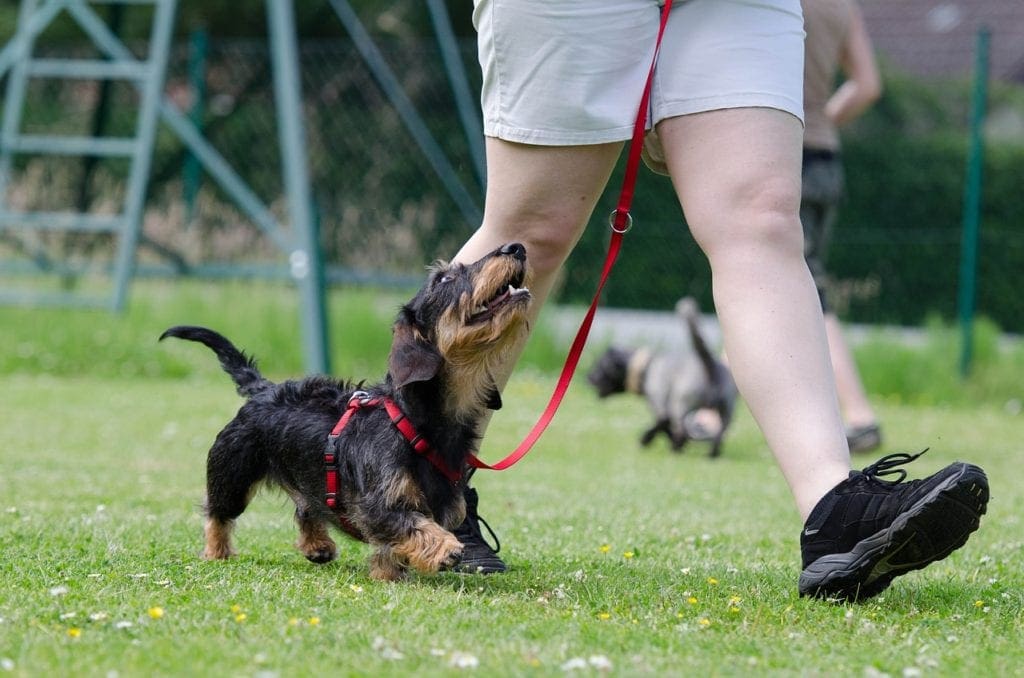
How Do Dogs Detect Cancer?
When dogs detect cancer, they use their powerful noses to smell it. A dog’s nose is between 10,000 and 100,000 times more powerful than a human’s nose! Cancer cells have specific odors caused by compounds they contain, which are released into the body. Dogs are trained to identify these and alert their owners.
Dogs can smell cancer directly, such as smelling a melanoma (aggressive skin cancer), or via waste products the body produces. Studies have included different breeds of dogs in testing, which revealed that they could detect some cancers to a high degree of accuracy (as much as 99%). These dogs could detect cancer in the urine, on the breath of patients, and from other waste products by smell alone. The smell of cancer can intensify as it progresses; humans can often detect this if a patient is suffering from late-stage cancer, but dogs can detect cancer even in its early stages.
Training To Alert: How Dogs Recognize Cancer
Most dogs are naturally in-tune with their owners, including being intuitive about their health. There have been cases of dogs detecting cancer in their owners with no training, alerting them that something is wrong. One more famous case involved a woman with ovarian cancer whose dog didn’t stop staring at and nudging her stomach before hiding. She went for an exam at her doctor’s office, and they found the stage-three ovarian cancer she wasn’t aware of.
Cancer research centers like Penn Vet use different technologies to teach and test dogs to detect cancer. The dogs are introduced to the smell of a cancer sample, rewarded, and taken to sniff different smells in scent banks. These banks will contain cancer samples, among other scents. The researchers and trainers instruct the dogs to identify the cancer samples and reward them for correct identification.
In one study by Penn Vet, the cancer detection dogs take a final test using a large scent wheel containing many samples, including one cancer sample. Researchers rewarded the dogs once they correctly identified the sample and alerted the researchers, such as by sitting. This wheel contained one sample of malignant cancer, benign (non-dangerous) cancers, other non-cancerous tissue samples, and random items as distractions. Penn Vet has reported that the dogs correctly identified the malignant sample with 90% accuracy.
Other experiments have used live patients to detect cancer; the dogs smelled the breath and bodily fluids of lung and breast cancer patients to test how accurate their detection and alerting were.
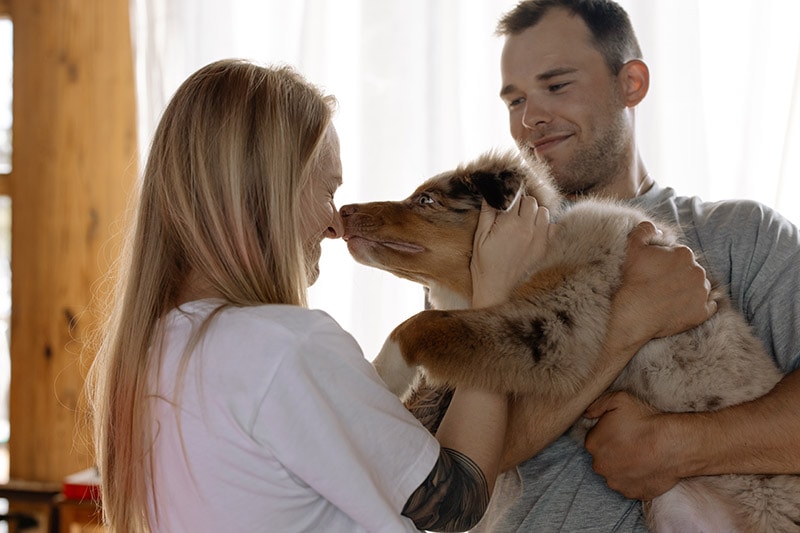
What Types of Cancer Can Dogs Smell?
Research and anecdotal evidence have shown that dogs can detect several types of cancer. Dogs detect cancer in humans with a degree of accuracy of the following types:
- Breast and lung cancers by smelling the breath
- Bladder and prostate cancers by smelling urine
- Colorectal cancers by smelling breath and stool
- Ovarian tumors by smelling tissue and blood samples
- Cervical cancers by smelling tissue samples
How Do Dogs Act When They Smell Cancer?
A difference in its owner’s smell can be alarming to a dog, but there’ll be differences in behavior depending on whether the dog is trained to detect cancer. Dogs not trained to detect cancer have been reported to relentlessly bother their owners by licking, nudging, or staring at certain parts of their bodies to alert them that something’s changed. This is usually done with such persistence that their owners finally relent and get checked.
Trained dogs often alert their owners by performing an action or getting into position when they detect cancer. This is similar to other alert dogs, such as those that find drugs or cadavers. Sitting and lying down are common positions trained dogs will get into to alert, giving a clear signal to researchers.
Can Dogs Detect Cancer in Other Dogs?
Dogs can detect cancer in other dogs, but as of now, not as well as they can in humans. Studies have shown that dogs sometimes detect cancer in their canine companions, but there are limits to the study that don’t consider canine body language and behavior. Dogs use their complex sense of smell to communicate with one another in incredibly subtle but informative ways. They are up close and personal, sniffing each other all the time and reading different signals in the form of language that we can’t understand.
It’s almost guaranteed that they can recognize a difference in smell or notice new lumps or bumps, potentially sooner than the dog’s owner can. Sometimes this can result in obsessive licking, biting, or bothering of a lump or area on the dog suffering from cancer. If this happens, separating the dog from others is recommended until the problem area is checked. Excessive licking and biting can cause soreness on the skin and even cause sores, increasing the chance of infection.
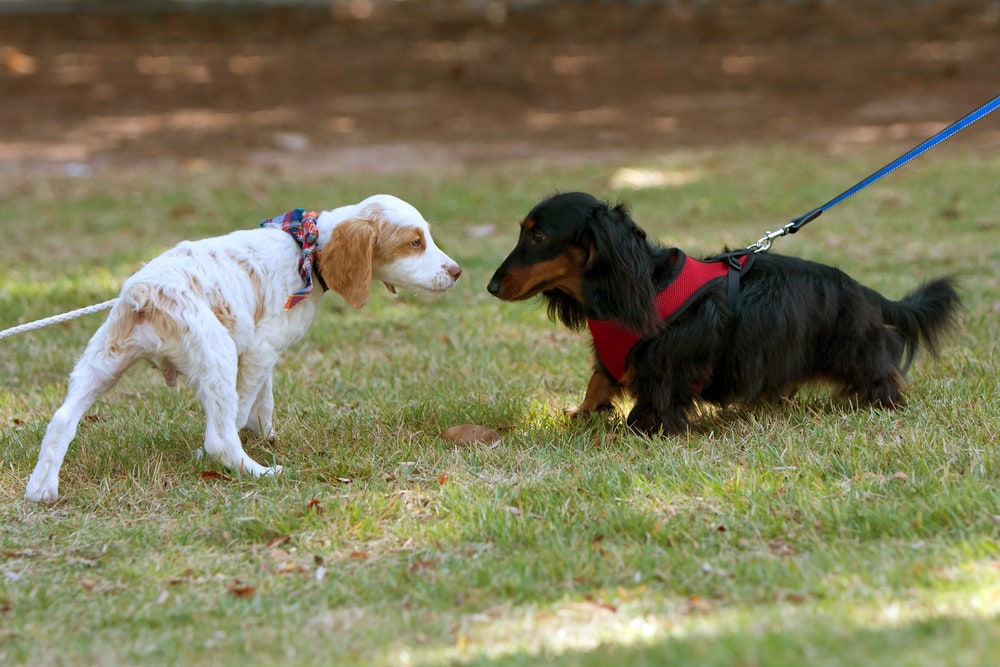
Final Thoughts
Dogs are intelligent and intuitive creatures that are often very in tune with their owners. Because of the mounting evidence to support the theory that dogs can detect cancer in humans, research has been ongoing to hone this process to see how it can apply in human medicine. While it’s unlikely that doctors will welcome dogs into the exam room, technology based on canine noses is being developed. If it works, this could mean earlier detection of cancer, leading to more lives saved.
Featured Image Credit: Prostock-studio, Shutterstock


